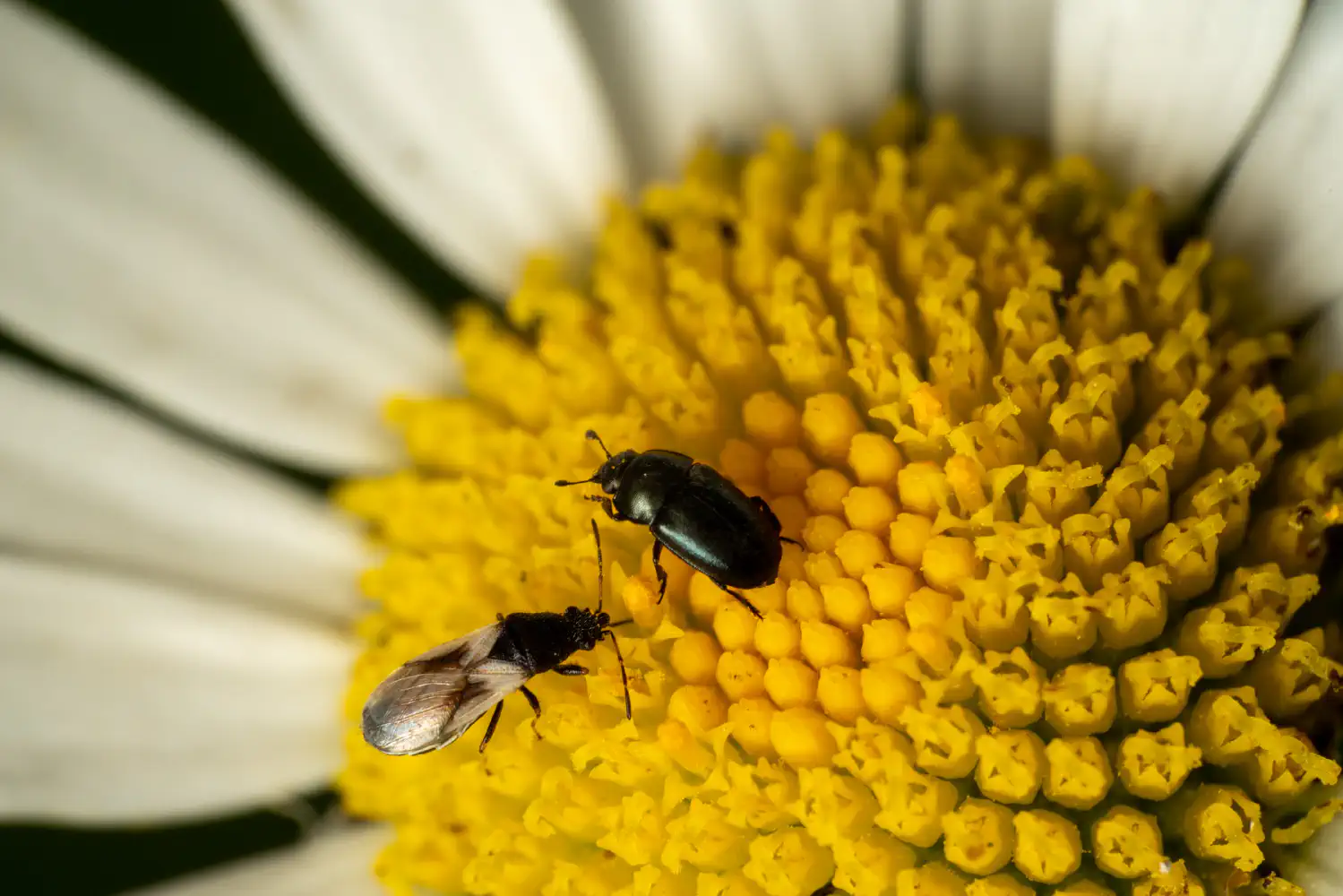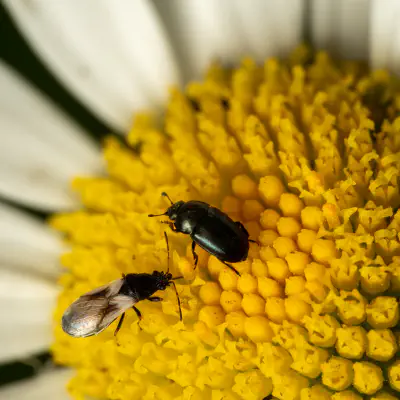Minute pirate bugs Lat. “Anthocoridae“
Anthocoridae is a family of bugs, commonly called minute pirate bugs or flower bugs. Worldwide there are 500-600 species.
Hierarchy
Description
Anthocoridae are 1.5–5 mm long and have soft, elongated oval, flat bodies, often patterned in black and white. The head is extended forward and the antennae are longer than the head and visible from above. They possess a piercing and sucking three-segmented beak or labium used to inject prey with digestive enzymes and consume food. In general appearance, they resemble common plant bugs (Miridae), but Anthocoridae differ by their possession of two ocelli as adults. Anthocorids possess two pairs of wings with hemelytra and membranous hindwings. Many species are referred to as insidious flower bugs or pirate bugs. The scientific name is a combination of the Greek words anthos “flower” and koris “bug”.
Habitat and behaviour
Many species can be found in cryptic habitats such as galls, but can also be present in open surface environments. They can often be found in many agricultural crops. They can feed on plant material, but mostly feed on other small soft-bodied arthropods. Anthocorids are often predacious both as nymphs and adults. They are beneficial as biological control agents. Orius insidiosus, the “insidious flower bug”, for example, feeds on the eggs of the corn earworm (Helicoverpa zea). Orius insidiosus is often released in greenhouses against mites and thrips. Eggs are laid in plant material and hatch in approximately 3 to 5 days. Nymphs require at least 20 days to progress through five instars. Adults live for approximately 35 days. These small insects can bite humans, however, they do not feed on human blood or inject venom or saliva. Reactions to bites in individuals can range from no effect to minor swelling and irritation.
Systematics
There are two subfamilies and at least 8 tribes:
References
Ancestry Graph
Further Information
„Minute pirate bugs“ on wikipedia.org
„Minute pirate bugs“ on iNaturalist.org
Copyright

This article uses material from the Wikipedia article Anthocoridae the free encyclopedia Wikipedia which is released under Creative Commons Attribution-ShareAlike 4.0 International License). On Wikipedia a list of authors is available.

Little beings in print
Order our calendars and books today!
Compiled with love. Printed sustainably. Experience our little beings even more vividly in print. All our publications are available for a small donation.


